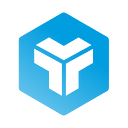User Journey to understand user needs
One of the various user research techniques we use in Redesign Projects is User Journeys.
A User Journey involves creating a map that shows the steps users take in a specific digital product. We have been immersed in the redesign of a platform aimed at developers for several months. For some reason, users were not completing the process to use the platform, and we needed to find out why.
If you want to learn UX research with a specialized training, we invite you to check out our Advanced Research Specialization Program (this training is in Spanish):
To approach the redesign of this product, we followed a series of rigorous steps to discover where users were experiencing difficulties (pain points or friction points).
The first thing we did was to conduct a sector benchmark to learn about best practices being carried out by competitors and find possible friction points with the product we were redesigning.
Once we had analyzed the competition, we conducted three heuristic expert analyses to understand the platform and identify both the points that could be causing more conflicts, as well as those that had the most room for improvement.
However, these were hypotheses, and we needed users to confirm that these were really the problems they were encountering when completing the initial process within the platform or to tell us what the real problems were.
We needed to align the external vision we had with the internal vision of the users, who are the ones actually using the platform. Only by defining the user experience were we able to identify the pain points. To do this, we created a User Journey.
Steps to perform a User Journey
- The first thing we had to do was to identify the user and define it. To do this, we conducted a workshop with stakeholders to define the buyer persona. Once we had defined this buyer persona, we moved on to define the stages that users have to follow to complete the entire process in order to identify each interaction. From this process, we identified five key scenarios in which the user interacted with the platform.
- To analyze these key moments, an international survey was created over five days. Each day, one of those key moments was evaluated. Each of the surveys had an image of the screen where each key moment occurred, along with a numerical indicator of each element that makes up this page to facilitate the test and thus obtain higher quality responses.
- At the same time that this User Journey was defined, as we already had the buyer persona defined, we began to recruit users who were interested in participating in the test. In addition to meeting the characteristics we had defined when creating the user archetype, we needed them not to currently use the platform.
- The last step was for the users to perform the test to obtain the results and be able to analyze them.
After the five-day test, it was time to analyze the user responses to draw conclusions and make the redesign proposal for the platform.
With the results obtained from the User Journey and the conclusions from the heuristic analyses carried out previously, we could see that most of our hypotheses were confirmed by the User Journey results, and we also discovered some additional points where users were having problems. Using these results, we created a user-centered redesign proposal that addressed the users’ issues before the redesign.
This is one of the many reasons why we should always put users at the center before we start designing and listen to them, as they are the ones who will ultimately use the products we design.
This is a translation of the following article from our corporate website:
